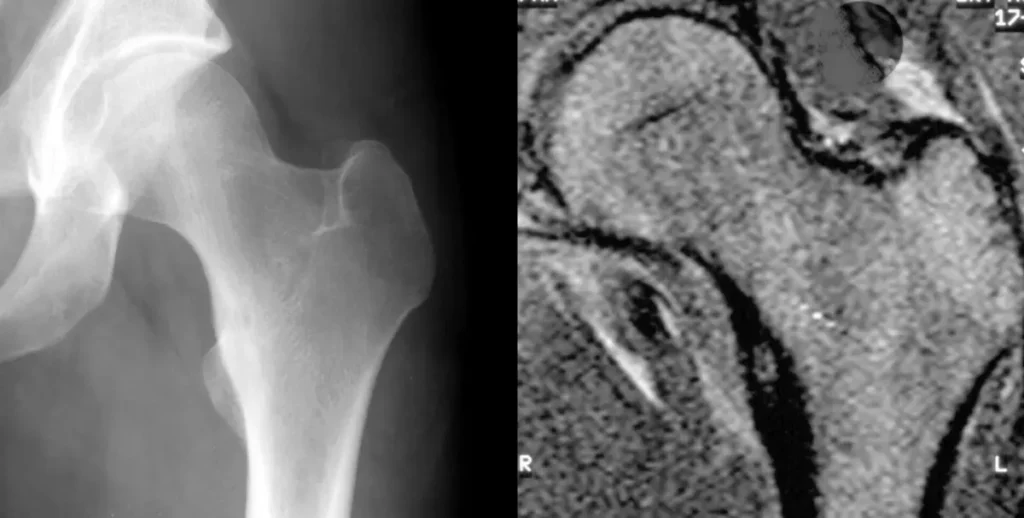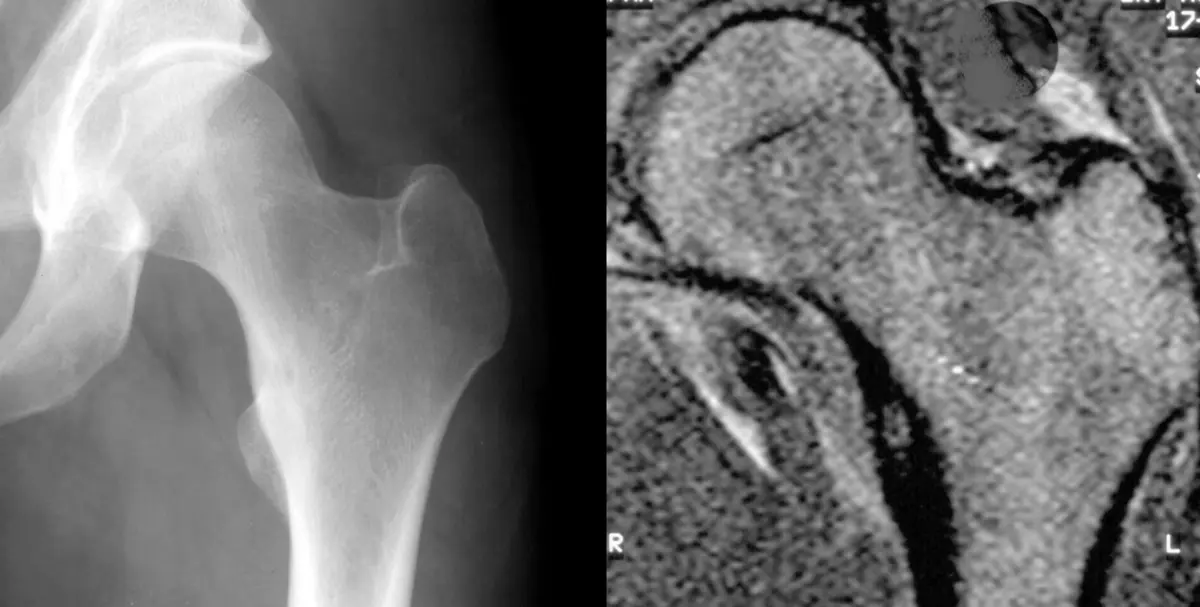Osteoid Osteoma Overview
Osteoid osteoma is a benign but painful bone tumor that most commonly affects the long bones of the body, such as the femur and tibia, and sometimes the spine. It typically occurs in children, adolescents, and young adults, and is characterized by a small size (usually less than 2 cm). Although non-cancerous, osteoid osteomas can cause significant discomfort and disrupt daily activities. At Fight Bone Tumors, Dr. Kishore B Reddy and our specialized team provide advanced diagnostic and treatment options for osteoid osteoma, ensuring effective relief and recovery.
Symptoms:
The symptoms of osteoid osteoma can be quite distinctive, often including:
- Localized Pain: Typically severe and worsening at night; often relieved by nonsteroidal anti-inflammatory drugs (NSAIDs).
- Swelling: In the affected area, although less common.
- Tenderness: The area around the tumor may be sensitive to touch.
- Limping: Particularly if the tumor affects a leg bone.
- Growth Disturbances: In children, the tumor may cause abnormal growth patterns in the affected bone.
Early diagnosis and treatment can help alleviate symptoms and prevent complications.
Diagnosis:
Diagnosing osteoid osteoma involves several steps to confirm the presence of the tumor and assess its characteristics:
- Physical Examination: Initial assessment to evaluate symptoms and overall health.
- Imaging Tests: X-rays, CT scans, and MRI to visualize the tumor, determine its size, and assess its location.
- Bone Scans: Sometimes used to detect increased bone activity indicative of an osteoid osteoma.
- Biopsy: In rare cases, a sample of the tumor tissue may be taken and examined under a microscope to confirm the diagnosis.
Accurate diagnosis is crucial for developing an effective treatment plan.

Treatment Options:
Treatment for osteoid osteoma aims to relieve pain, remove the tumor, and restore normal function. Our approach includes:
Medications:
- NSAIDs: Commonly used to manage pain and inflammation. These medications can provide significant relief but are not a long-term solution.
Minimally Invasive Procedures:
- Radiofrequency Ablation (RFA): A minimally invasive procedure where a probe is used to heat and destroy the tumor tissue. RFA is highly effective and often the preferred treatment option.
Surgery:
- Curettage: Scraping out the tumor from the bone. This is often followed by filling the cavity with bone graft or bone cement.
- En Bloc Resection: Surgical removal of the tumor along with a margin of healthy tissue, typically reserved for cases where RFA is not feasible.
Our multidisciplinary team collaborates to develop personalized treatment plans aimed at achieving the best possible outcomes for our patients.
Support and Rehabilitation:
Managing osteoid osteoma involves more than just medical treatment. We offer comprehensive support services to help patients and their families through this journey:
Physical Therapy:
- Essential for recovery post-treatment, aiding in regaining strength and mobility.
Emotional Support:
- Counseling and support groups to address the emotional and psychological impacts of living with osteoid osteoma.
Nutritional Guidance:
- Tailored dietary plans to support overall health and recovery during and after treatment.
Follow-Up Care:
- Regular check-ups to monitor for recurrence and manage any long-term side effects of treatment.
FAQ's
Osteoid osteoma is a benign but painful bone tumor that most commonly affects the long bones and sometimes the spine. It is characterized by its small size and significant pain, especially at night.
Common symptoms include localized pain (worsening at night and relieved by NSAIDs), swelling, tenderness, limping (if affecting a leg bone), and growth disturbances in children.
Diagnosis typically involves a physical examination, imaging tests (X-rays, CT scans, MRI), bone scans, and occasionally a biopsy.
Treatment options may include medications (NSAIDs), minimally invasive procedures like radiofrequency ablation (RFA), and surgery (curettage or en bloc resection).
RFA is a minimally invasive procedure where a probe is used to heat and destroy the tumor tissue. It is highly effective and often the preferred treatment option for osteoid osteoma.
Potential side effects can include pain, swelling, risk of infection, and challenges related to rehabilitation post-treatment. Specific treatments may have their own unique side effects.
Managing side effects can involve rest, physical therapy, proper nutrition, pain management medications, and emotional support through counseling or support groups.
We offer physical therapy, emotional support, nutritional guidance, and regular follow-up care to monitor for recurrence and manage long-term side effects.
With appropriate treatment, many patients can achieve long-term pain relief and recovery. The prognosis is generally excellent with proper intervention.
You can schedule a consultation by calling us at +91 9032027279 or emailing info@fightbonetumors.com. Our team is here to provide personalized care and support.





